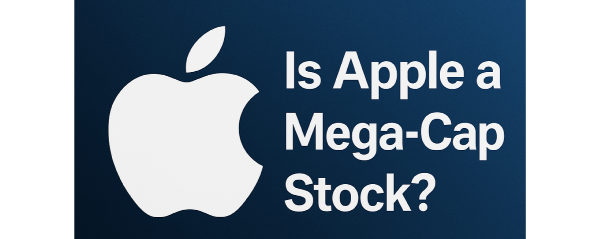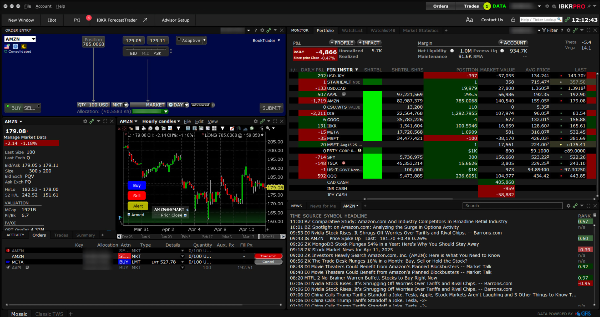Introduction
Blue-chip funds represent one of the most trusted investment vehicles for both novice and seasoned investors. These funds focus on established, financially sound companies with reliable performance histories and strong market positions. Investing in blue-chip funds offers a balance of growth potential and relative stability compared to more speculative options. Many investors turn to these funds as core holdings in their portfolios to build long-**term wealth while managing risk. Understanding the landscape of blue-chip funds is essential for making informed investment decisions.
Understanding Blue-Chip Funds
Blue-chip funds invest primarily in large, well-established companies with proven track records of stability and reliable performance. These companies typically maintain dominant market positions, demonstrate consistent financial strength, and offer regular dividend payments to shareholders. The term "blue-chip" originated from poker, where blue chips represent the highest value—reflecting the premium quality of these corporate giants such as Apple, Microsoft, Johnson & Johnson, and Procter & Gamble.
Different structures of blue-chip funds serve distinct investor needs. Blue-chip mutual funds offer professional management and diversification but may carry higher expense ratios and minimum investments. Blue-chip ETFs provide similar exposure with greater trading flexibility and typically lower costs. Meanwhile, blue-chip index funds passively track established indices like the S&P 500 or Dow Jones Industrial Average, offering broad market exposure at minimal fees.
These investment vehicles play a crucial role in portfolio construction by providing stability, consistent income through dividends, and long-term capital appreciation potential. Financial advisors often recommend allocating a significant portion of investment portfolios to blue-chip funds, particularly for investors approaching retirement or those seeking lower volatility. Portfolios containing 40-60% blue-chip exposures have historically demonstrated better risk-adjusted returns during market downturns compared to those heavily weighted toward smaller or less established companies.
Evaluating Blue-Chip Fund Performance
When assessing blue-chip fund performance, investors should focus on multiple metrics beyond simple returns. Key performance indicators include expense ratios, risk-adjusted measures and standard deviation, consistency of performance across market cycles, and benchmark comparison statistics. Blue-chip funds with expense ratios below 0.75% typically outperform their higher-cost counterparts over ten-year periods.
Historical performance analysis reveals that top-performing blue-chip funds share common characteristics: disciplined investment processes, experienced management teams with long tenures, and strategic allocation across sectors. Blue-chip funds maintaining diversification across minimum 30-40 holdings while overweighting quality factors such as strong balance sheets and sustainable competitive advantages have generated superior risk-adjusted returns during both bull and bear markets.
Top Blue-Chip Mutual Funds Analysis
The landscape of blue-chip mutual funds features several standout performers worth consideration for long-term investors. Fidelity Blue Chip Growth Fund (FBGRX) has consistently delivered impressive returns through its strategy of investing in large-cap companies with above-average growth potential and strong market positions. With a management approach focused on identifying companies with sustainable competitive advantages, this fund has outperformed its benchmark in seven of the last ten years.
Meanwhile, Vanguard Dividend Growth Fund (VDIGX) takes a different approach by emphasizing blue-chip companies with histories of increasing dividend payments, providing both capital appreciation and growing income streams for investors seeking stability. Comparative analysis reveals meaningful differences in sector allocations, volatility profiles, and management styles across these funds, with important implications for portfolio fit.
Leading Blue-Chip ETFs Review
Blue-chip ETFs offer investors efficient access to portfolios of established, financially sound companies with lower expense ratios and greater trading flexibility than their mutual fund counterparts. The SPDR Dow Jones Industrial Average ETF (DIA) provides exposure to 30 of America's most prominent blue-chip companies, making it one of the most recognized vehicles for blue-chip investing. With its concentrated portfolio of industry leaders, DIA delivers a straightforward approach to capturing the performance of household names like Microsoft, Apple, and Johnson & Johnson. In comparison, the Vanguard Mega Cap ETF (MGC) casts a wider net by tracking the CRSP US Mega Cap Index, offering investors exposure to approximately 250 of the largest U.S. companies.
The iShares S&P 100 ETF (OEF) and Invesco Dow Jones Industrial Average Dividend ETF (DJD) represent alternative approaches to blue-chip ETF investing. OEF concentrates on 100 major blue-chip companies with options contracts traded on them, providing a balance between the highly concentrated DIA and broader MGC. Meanwhile, DJD employs a distinctive dividend-weighted methodology that allocates more assets to components of the Dow Jones Industrial Average with higher dividend yields. This innovative approach has resulted in DJD delivering superior income generation while maintaining core blue-chip exposure. When evaluating these ETFs, investors should consider tracking efficiency, liquidity measures, and how each fund's composition aligns with specific investment objectives.
Blue-Chip Index Funds Worth Considering
When it comes to long-term investing, blue-chip index funds offer a cost-effective and diversified way to gain exposure to some of the world’s most stable and profitable companies. These funds typically track major indices such as the S&P 500, Dow Jones Industrial Average, or NASDAQ-100, and include household names like Apple, Johnson & Johnson, and Procter & Gamble. Among the most popular choices are the Vanguard 500 Index Fund (VFIAX) and Fidelity 500 Index Fund (FXAIX), both of which mirror the performance of the S&P 500 and boast ultra-low expense ratios of 0.04% and 0.015%, respectively. Their consistent performance over time and broad exposure to top-tier companies make them ideal for investors seeking reliable growth with manageable risk.
Another strong contender in the blue-chip index fund space is the Schwab U.S. Large-Cap ETF (SCHX), which provides exposure to the largest 750 U.S. companies. SCHX is praised for its low cost (0.03% expense ratio) and tight tracking error, offering investors an efficient route to diversified blue-chip exposure. For those looking beyond the U.S., Vanguard FTSE Developed Markets ETF (VEA) includes international blue-chip companies from Europe and the Pacific. These funds are especially suited for retirement accounts and long-term growth portfolios due to their tax efficiency and historically lower volatility.
International Blue-Chip Fund Options
International blue-chip funds allow investors to diversify beyond U.S. borders by investing in globally recognized companies with strong financials and proven business models. These funds typically include multinational giants like Nestlé, Toyota, and Royal Dutch Shell, providing stability, steady growth, and dividend income. The Vanguard FTSE All-World ex-US Index Fund (VFWAX) and the iShares International Select Dividend ETF (IDV) are two notable options.
VFWAX covers a broad range of developed and emerging markets, while IDV focuses on high-dividend blue-chip stocks in developed countries.
These funds are ideal for investors looking to hedge against U.S. market volatility while tapping into global economic growth. These funds are exposed to currency diversification, geopolitical risks, currency fluctuations, and varying accounting standards.
Sector-Specific Blue-Chip Funds
Sector-specific blue-chip funds provide concentrated exposure to industry leaders in sectors like technology, healthcare, energy, and finance. The Fidelity Select Technology Portfolio (FSPTX) and Vanguard Health Care Fund (VGHCX) are examples that focus on dominant companies such as Microsoft, Apple, Johnson & Johnson, and Pfizer. While sector-specific blue-chip funds can offer strong returns, they come with increased volatility due to their limited diversification. Mixing sector-specific funds with broader index options can enhance returns while maintaining risk balance.
Fee Structure and Expense Considerations
Understanding the fee structure is critical when choosing a blue-chip fund. Lower expenses can significantly enhance long-term returns due to the compounding effect. Actively managed mutual funds may charge between 0.5% and 1.5%, which can eat into returns over time.
Besides the expense ratio, investors should be aware of other fees such as front-end loads, redemption fees, and account maintenance charges. Fee transparency varies, especially among actively managed funds, so it’s important to read the fund’s prospectus carefully.
Tax Efficiency of Blue-Chip Funds
Tax efficiency is a crucial factor in fund selection, particularly for taxable accounts. Index funds and ETFs tend to be more tax-efficient than actively managed mutual funds due to their lower portfolio turnover and in-kind redemption process. Investors should also consider the tax treatment of dividends and international funds.
Blue-Chip Funds for Different Investment Goals
Blue-chip funds can serve a variety of investment objectives—from capital appreciation and income generation to capital preservation. For long-term growth, index funds such as Fidelity ZERO Large Cap Index Fund (FNILX) offer broad exposure at zero expense ratio. For income-oriented investors, funds like the Vanguard Dividend Growth Fund (VDIGX) focus on high-quality dividend-paying stocks with a strong track record.
Risk Management with Blue-Chip Funds
Though blue-chip funds are generally less volatile than small-cap or emerging market funds, they are not risk-free. Market downturns, sector-specific shocks, and global events can still impact performance. Diversifying across multiple sectors and geographies can help mitigate these risks. Some investors may also use hedging strategies or allocate a portion to defensive blue-chip sectors such as consumer staples and utilities. Disciplined rebalancing can improve risk-adjusted returns over time.
Expert Opinions and Fund Manager Insights
Top fund managers and analysts often stress the importance of discipline and fundamentals when selecting blue-chip investments. Renowned investors like Warren Buffett have long advocated for low-cost index funds that track large-cap companies. Fund managers from T. Rowe Price, Fidelity, and Vanguard frequently emphasize holding high-quality businesses with durable competitive advantages, stable earnings, and strong management teams. In annual shareholder letters and investor calls, managers often discuss macroeconomic factors, portfolio construction, and individual stock picks. Following these insights can help investors make informed decisions.
DIY vs. Managed Blue-Chip Fund Approaches
Investors face a choice between managing their own portfolios or relying on professional fund managers. DIY investors may prefer ETFs or low-cost index funds for their transparency and control. This approach allows for easy customization, such as tilting toward dividends or certain sectors. Managed funds, meanwhile, offer the benefit of professional expertise and in-depth research. Actively managed blue-chip funds aim to outperform the market, although they come with higher fees and potentially higher turnover.
Practical Investment Strategies
A common strategy is dollar-cost averaging into blue-chip funds, which helps reduce the impact of market volatility over time. By investing fixed amounts regularly, investors can avoid trying to time the market and benefit from compounding returns. This method is especially effective when used with index-based blue-chip funds. Another tactic is core-satellite investing, where blue-chip index funds form the "core" of a portfolio, and smaller satellite allocations target high-growth sectors or thematic funds. This balance helps capture upside while maintaining stability.
Common Mistakes to Avoid
One common mistake is chasing past performance without understanding the underlying risk. Just because a fund has performed well historically doesn’t mean it will continue to do so. Investors should focus on fundamentals like the fund’s strategy, holdings, expenses, and fit with their goals.
Another misstep is overconcentration—either by investing in too many similar blue-chip funds or overweighting one sector. This can reduce diversification benefits. Regularly reviewing your portfolio and staying aligned with your objectives can help avoid these pitfalls.
Future Outlook for Blue-Chip Funds
The long-term outlook for blue-chip funds remains favorable, especially as market uncertainty and inflation pressures drive demand for high-quality, stable companies. Sectors like technology, healthcare, and consumer staples are expected to lead the charge, supported by global megatrends and innovation. Passive index investing is also gaining momentum, with ETFs seeing record inflows. However, investors should remain cautious of valuation risks and interest rate impacts, which may influence returns. The next decade may see moderate but stable growth from blue-chip holdings.
How to Choose the Right Blue-Chip Fund for You
Choosing the right blue-chip fund starts with defining your financial goals—growth, income, or preservation—and your investment time horizon. Consider factors like the fund’s historical performance, expense ratio, underlying index or holdings, and whether it aligns with your risk tolerance. Also assess tax implications and the type of account you’re investing through.
Conclusion
By understanding key factors like fees, tax efficiency, and fund objectives, investors can tailor their portfolios to meet their unique needs. While no investment is risk-free, blue-chip funds tend to weather market volatility better than many alternatives. With the right mix of DIY research, professional insights, and disciplined investing, anyone can harness the potential of blue-chip funds to secure their financial future.





























Introduction
Blue-chip funds represent one of the most trusted investment vehicles for both novice and seasoned investors. These funds focus on established, financially sound companies with reliable performance histories and strong market positions. Investing in blue-chip funds offers a balance of growth potential and relative stability compared to more speculative options. Many investors turn to these funds as core holdings in their portfolios to build long-**term wealth while managing risk. Understanding the landscape of blue-chip funds is essential for making informed investment decisions.
Understanding Blue-Chip Funds
Blue-chip funds invest primarily in large, well-established companies with proven track records of stability and reliable performance. These companies typically maintain dominant market positions, demonstrate consistent financial strength, and offer regular dividend payments to shareholders. The term "blue-chip" originated from poker, where blue chips represent the highest value—reflecting the premium quality of these corporate giants such as Apple, Microsoft, Johnson & Johnson, and Procter & Gamble.
Different structures of blue-chip funds serve distinct investor needs. Blue-chip mutual funds offer professional management and diversification but may carry higher expense ratios and minimum investments. Blue-chip ETFs provide similar exposure with greater trading flexibility and typically lower costs. Meanwhile, blue-chip index funds passively track established indices like the S&P 500 or Dow Jones Industrial Average, offering broad market exposure at minimal fees.
These investment vehicles play a crucial role in portfolio construction by providing stability, consistent income through dividends, and long-term capital appreciation potential. Financial advisors often recommend allocating a significant portion of investment portfolios to blue-chip funds, particularly for investors approaching retirement or those seeking lower volatility. Portfolios containing 40-60% blue-chip exposures have historically demonstrated better risk-adjusted returns during market downturns compared to those heavily weighted toward smaller or less established companies.
Evaluating Blue-Chip Fund Performance
When assessing blue-chip fund performance, investors should focus on multiple metrics beyond simple returns. Key performance indicators include expense ratios, risk-adjusted measures and standard deviation, consistency of performance across market cycles, and benchmark comparison statistics. Blue-chip funds with expense ratios below 0.75% typically outperform their higher-cost counterparts over ten-year periods.
Historical performance analysis reveals that top-performing blue-chip funds share common characteristics: disciplined investment processes, experienced management teams with long tenures, and strategic allocation across sectors. Blue-chip funds maintaining diversification across minimum 30-40 holdings while overweighting quality factors such as strong balance sheets and sustainable competitive advantages have generated superior risk-adjusted returns during both bull and bear markets.
Top Blue-Chip Mutual Funds Analysis
The landscape of blue-chip mutual funds features several standout performers worth consideration for long-term investors. Fidelity Blue Chip Growth Fund (FBGRX) has consistently delivered impressive returns through its strategy of investing in large-cap companies with above-average growth potential and strong market positions. With a management approach focused on identifying companies with sustainable competitive advantages, this fund has outperformed its benchmark in seven of the last ten years.
Meanwhile, Vanguard Dividend Growth Fund (VDIGX) takes a different approach by emphasizing blue-chip companies with histories of increasing dividend payments, providing both capital appreciation and growing income streams for investors seeking stability. Comparative analysis reveals meaningful differences in sector allocations, volatility profiles, and management styles across these funds, with important implications for portfolio fit.
Leading Blue-Chip ETFs Review
Blue-chip ETFs offer investors efficient access to portfolios of established, financially sound companies with lower expense ratios and greater trading flexibility than their mutual fund counterparts. The SPDR Dow Jones Industrial Average ETF (DIA) provides exposure to 30 of America's most prominent blue-chip companies, making it one of the most recognized vehicles for blue-chip investing. With its concentrated portfolio of industry leaders, DIA delivers a straightforward approach to capturing the performance of household names like Microsoft, Apple, and Johnson & Johnson. In comparison, the Vanguard Mega Cap ETF (MGC) casts a wider net by tracking the CRSP US Mega Cap Index, offering investors exposure to approximately 250 of the largest U.S. companies.
The iShares S&P 100 ETF (OEF) and Invesco Dow Jones Industrial Average Dividend ETF (DJD) represent alternative approaches to blue-chip ETF investing. OEF concentrates on 100 major blue-chip companies with options contracts traded on them, providing a balance between the highly concentrated DIA and broader MGC. Meanwhile, DJD employs a distinctive dividend-weighted methodology that allocates more assets to components of the Dow Jones Industrial Average with higher dividend yields. This innovative approach has resulted in DJD delivering superior income generation while maintaining core blue-chip exposure. When evaluating these ETFs, investors should consider tracking efficiency, liquidity measures, and how each fund's composition aligns with specific investment objectives.
Blue-Chip Index Funds Worth Considering
When it comes to long-term investing, blue-chip index funds offer a cost-effective and diversified way to gain exposure to some of the world’s most stable and profitable companies. These funds typically track major indices such as the S&P 500, Dow Jones Industrial Average, or NASDAQ-100, and include household names like Apple, Johnson & Johnson, and Procter & Gamble. Among the most popular choices are the Vanguard 500 Index Fund (VFIAX) and Fidelity 500 Index Fund (FXAIX), both of which mirror the performance of the S&P 500 and boast ultra-low expense ratios of 0.04% and 0.015%, respectively. Their consistent performance over time and broad exposure to top-tier companies make them ideal for investors seeking reliable growth with manageable risk.
Another strong contender in the blue-chip index fund space is the Schwab U.S. Large-Cap ETF (SCHX), which provides exposure to the largest 750 U.S. companies. SCHX is praised for its low cost (0.03% expense ratio) and tight tracking error, offering investors an efficient route to diversified blue-chip exposure. For those looking beyond the U.S., Vanguard FTSE Developed Markets ETF (VEA) includes international blue-chip companies from Europe and the Pacific. These funds are especially suited for retirement accounts and long-term growth portfolios due to their tax efficiency and historically lower volatility.
International Blue-Chip Fund Options
International blue-chip funds allow investors to diversify beyond U.S. borders by investing in globally recognized companies with strong financials and proven business models. These funds typically include multinational giants like Nestlé, Toyota, and Royal Dutch Shell, providing stability, steady growth, and dividend income. The Vanguard FTSE All-World ex-US Index Fund (VFWAX) and the iShares International Select Dividend ETF (IDV) are two notable options. VFWAX covers a broad range of developed and emerging markets, while IDV focuses on high-dividend blue-chip stocks in developed countries.
These funds are ideal for investors looking to hedge against U.S. market volatility while tapping into global economic growth. These funds are exposed to currency diversification, geopolitical risks, currency fluctuations, and varying accounting standards.
Sector-Specific Blue-Chip Funds
Sector-specific blue-chip funds provide concentrated exposure to industry leaders in sectors like technology, healthcare, energy, and finance. The Fidelity Select Technology Portfolio (FSPTX) and Vanguard Health Care Fund (VGHCX) are examples that focus on dominant companies such as Microsoft, Apple, Johnson & Johnson, and Pfizer. While sector-specific blue-chip funds can offer strong returns, they come with increased volatility due to their limited diversification. Mixing sector-specific funds with broader index options can enhance returns while maintaining risk balance.
Fee Structure and Expense Considerations
Understanding the fee structure is critical when choosing a blue-chip fund. Lower expenses can significantly enhance long-term returns due to the compounding effect. Actively managed mutual funds may charge between 0.5% and 1.5%, which can eat into returns over time. Besides the expense ratio, investors should be aware of other fees such as front-end loads, redemption fees, and account maintenance charges. Fee transparency varies, especially among actively managed funds, so it’s important to read the fund’s prospectus carefully.
Tax Efficiency of Blue-Chip Funds
Tax efficiency is a crucial factor in fund selection, particularly for taxable accounts. Index funds and ETFs tend to be more tax-efficient than actively managed mutual funds due to their lower portfolio turnover and in-kind redemption process. Investors should also consider the tax treatment of dividends and international funds.
Blue-Chip Funds for Different Investment Goals
Blue-chip funds can serve a variety of investment objectives—from capital appreciation and income generation to capital preservation. For long-term growth, index funds such as Fidelity ZERO Large Cap Index Fund (FNILX) offer broad exposure at zero expense ratio. For income-oriented investors, funds like the Vanguard Dividend Growth Fund (VDIGX) focus on high-quality dividend-paying stocks with a strong track record.
Risk Management with Blue-Chip Funds
Though blue-chip funds are generally less volatile than small-cap or emerging market funds, they are not risk-free. Market downturns, sector-specific shocks, and global events can still impact performance. Diversifying across multiple sectors and geographies can help mitigate these risks. Some investors may also use hedging strategies or allocate a portion to defensive blue-chip sectors such as consumer staples and utilities. Disciplined rebalancing can improve risk-adjusted returns over time.
Expert Opinions and Fund Manager Insights
Top fund managers and analysts often stress the importance of discipline and fundamentals when selecting blue-chip investments. Renowned investors like Warren Buffett have long advocated for low-cost index funds that track large-cap companies. Fund managers from T. Rowe Price, Fidelity, and Vanguard frequently emphasize holding high-quality businesses with durable competitive advantages, stable earnings, and strong management teams. In annual shareholder letters and investor calls, managers often discuss macroeconomic factors, portfolio construction, and individual stock picks. Following these insights can help investors make informed decisions.
DIY vs. Managed Blue-Chip Fund Approaches Investors face a choice between managing their own portfolios or relying on professional fund managers. DIY investors may prefer ETFs or low-cost index funds for their transparency and control. This approach allows for easy customization, such as tilting toward dividends or certain sectors. Managed funds, meanwhile, offer the benefit of professional expertise and in-depth research. Actively managed blue-chip funds aim to outperform the market, although they come with higher fees and potentially higher turnover.
Practical Investment Strategies
A common strategy is dollar-cost averaging into blue-chip funds, which helps reduce the impact of market volatility over time. By investing fixed amounts regularly, investors can avoid trying to time the market and benefit from compounding returns. This method is especially effective when used with index-based blue-chip funds. Another tactic is core-satellite investing, where blue-chip index funds form the "core" of a portfolio, and smaller satellite allocations target high-growth sectors or thematic funds. This balance helps capture upside while maintaining stability.
Common Mistakes to Avoid
One common mistake is chasing past performance without understanding the underlying risk. Just because a fund has performed well historically doesn’t mean it will continue to do so. Investors should focus on fundamentals like the fund’s strategy, holdings, expenses, and fit with their goals.
Another misstep is overconcentration—either by investing in too many similar blue-chip funds or overweighting one sector. This can reduce diversification benefits. Regularly reviewing your portfolio and staying aligned with your objectives can help avoid these pitfalls.
Future Outlook for Blue-Chip Funds
The long-term outlook for blue-chip funds remains favorable, especially as market uncertainty and inflation pressures drive demand for high-quality, stable companies. Sectors like technology, healthcare, and consumer staples are expected to lead the charge, supported by global megatrends and innovation. Passive index investing is also gaining momentum, with ETFs seeing record inflows. However, investors should remain cautious of valuation risks and interest rate impacts, which may influence returns. The next decade may see moderate but stable growth from blue-chip holdings.
How to Choose the Right Blue-Chip Fund for You
Choosing the right blue-chip fund starts with defining your financial goals—growth, income, or preservation—and your investment time horizon. Consider factors like the fund’s historical performance, expense ratio, underlying index or holdings, and whether it aligns with your risk tolerance. Also assess tax implications and the type of account you’re investing through.
Conclusion
By understanding key factors like fees, tax efficiency, and fund objectives, investors can tailor their portfolios to meet their unique needs. While no investment is risk-free, blue-chip funds tend to weather market volatility better than many alternatives. With the right mix of DIY research, professional insights, and disciplined investing, anyone can harness the potential of blue-chip funds to secure their financial future.